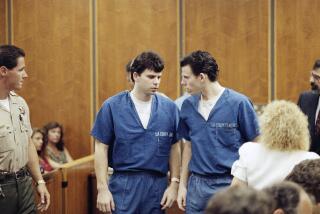Security System Tested on Bay Area Ferry
Passengers on the Golden Gate Ferry running between this Marin County city and San Francisco were screened for explosives Monday as federal and local officials launched a test of a security system.
The Transportation Security Administration, along with the Coast Guard and the local transportation district that runs the ferry system, are conducting a 30-day pilot project in Larkspur and San Francisco.
Although the technology has been used at U.S. airports since last year, this is the first time the system is being tested on a ferry.
“This technology will enhance America’s security for the ferry system,” said Ed Gomez, Western Area director for the TSA, at a news conference at the Larkspur Ferry Terminal. “We recognize one of the best ways to beat terrorists is through state-of-the-art technology.”
Passengers entering the terminal are given cards explaining the program. The same cards are then run through a document scanner that can detect trace amounts of explosive materials on passengers’ hands.
If no explosives are detected, the scanner clears the passenger to board the ferry. If the machine finds traces of any of more than 40 types of chemicals used in explosives, the passenger is directed by screeners to a secondary area for a pat-down and a search of his or her belongings with another explosive-detection device.
Capt. Jim Bamberger, branch chief of maritime passenger security with the TSA, said that even if a terrorist never touched a bomb placed inside a suitcase by an associate, the equipment might be sensitive enough to detect trace particles that could have been transferred to the terrorist’s hand.
If anything suspicious is found, the case will be turned over to police.
Eleven TSA screeners and two local police officers are participating in the pilot project.
The screenings are taking place in Larkspur for the first two weeks and will then move to the ferry terminal in San Francisco for the remaining two weeks.
The testing is scheduled for off-peak, weekday hours, but later will be expanded to rush-hour trips.
Bamberger said there has been a lot of interest in the system from other cities, but declined to name them.
A top TSA official declined to release the cost of the trial.
Coast Guard Vice Adm. Harvey Johnson, commander of the Pacific Area, conceded that the system “won’t be foolproof.”
But he added: “We’ll learn lessons about both the process and equipment.”
He also sees a deterrent value in the screenings, saying, “We will make the terrorist’s job that much more difficult.”
Passengers who took part in the screenings Monday were for the most part complimentary about the new security system.
“I think it’s great,” said Gudrun Solomon, 80, of San Anselmo, who was carrying a bouquet of roses. “It’s something we need. The system is beautiful. It was nice and fast.”
Her companion, Judy Kay, 67, a hairstylist from Napa, said she’d like to see more extensive baggage screening, like at airports.
“I thought it went very quickly,” said John Basseli, 74, of Richmond, who was accompanying his daughter and two granddaughters on the trip to San Francisco.
“If it helps screen for terrorists, it’s a good idea.”
More to Read
Sign up for Essential California
The most important California stories and recommendations in your inbox every morning.
You may occasionally receive promotional content from the Los Angeles Times.










